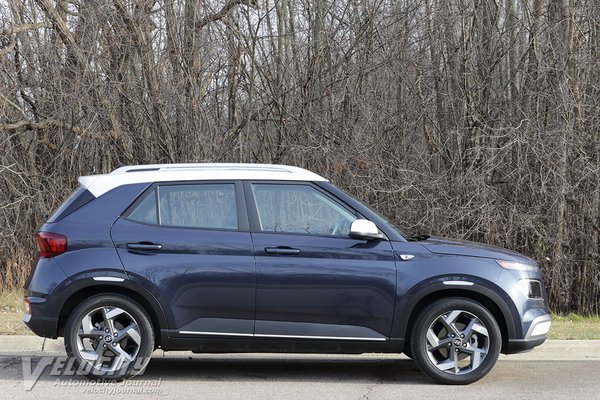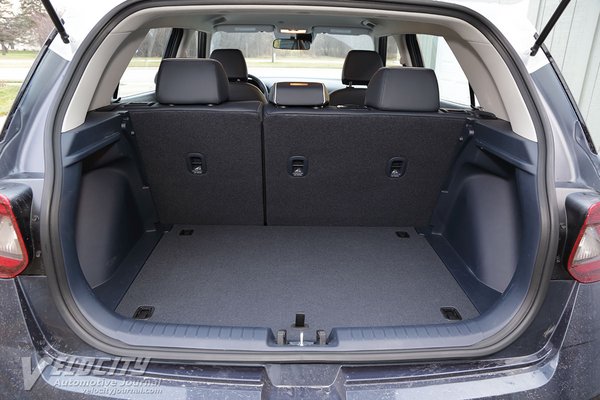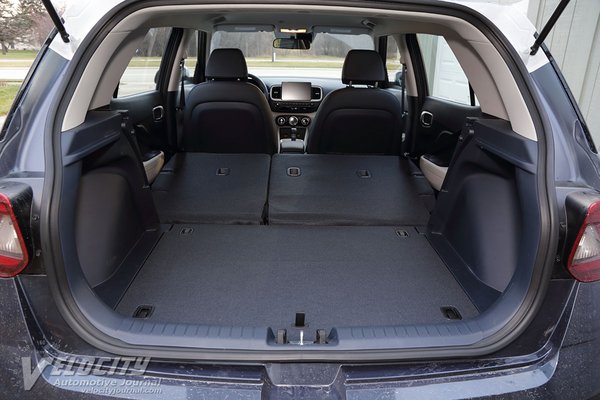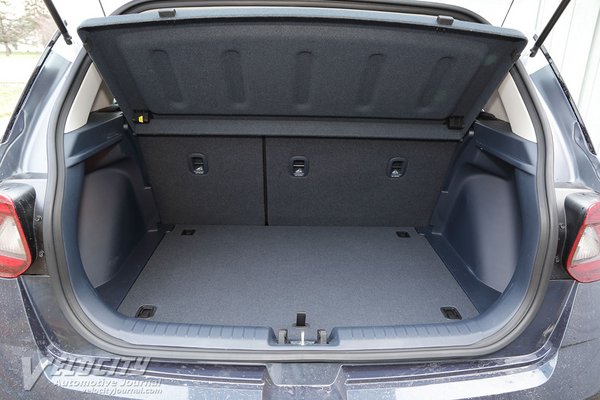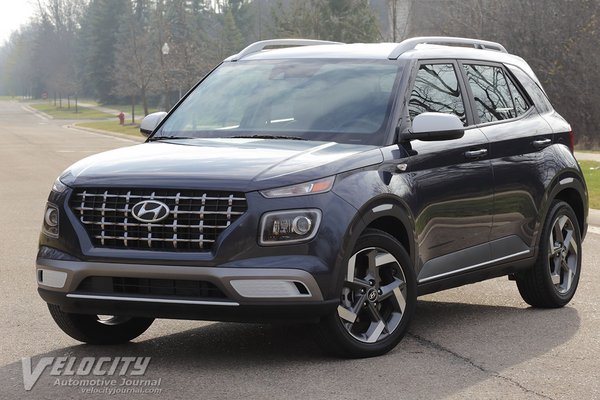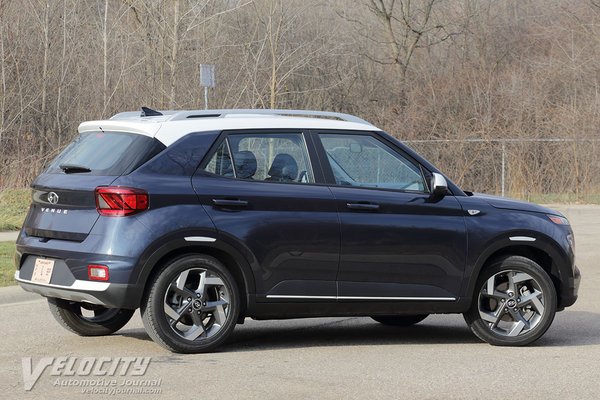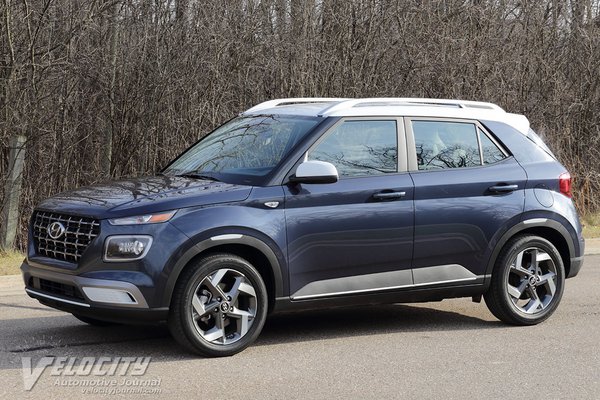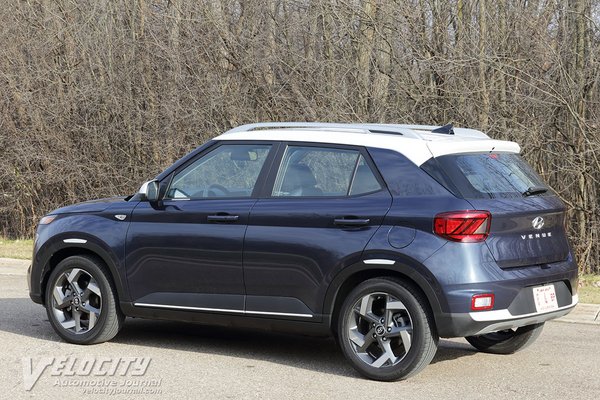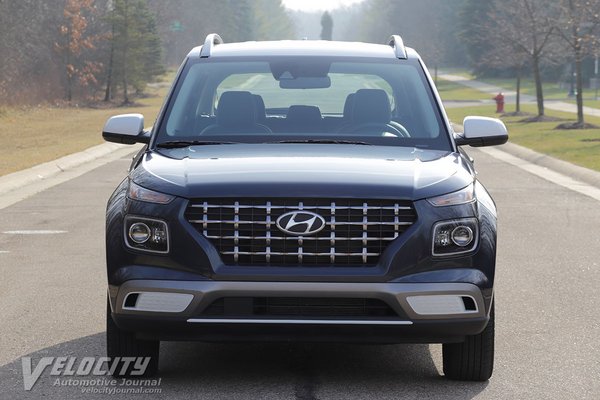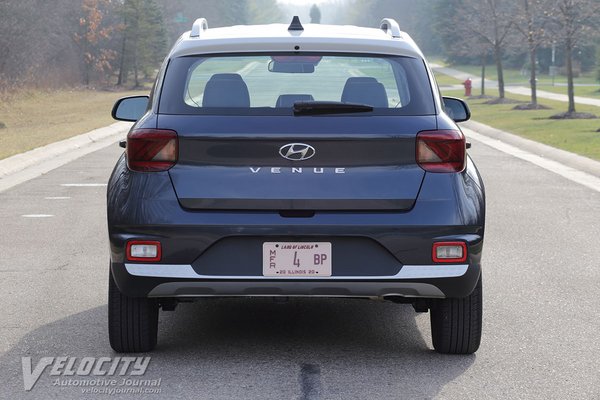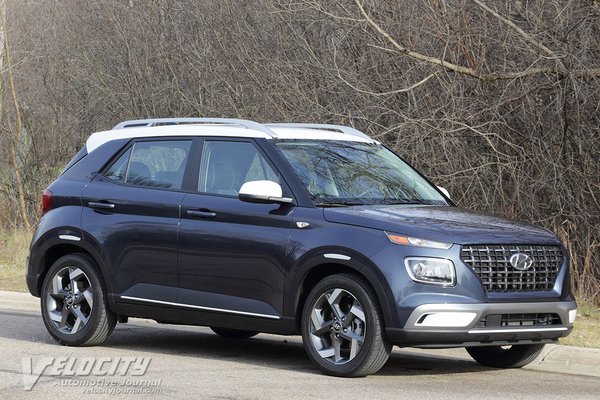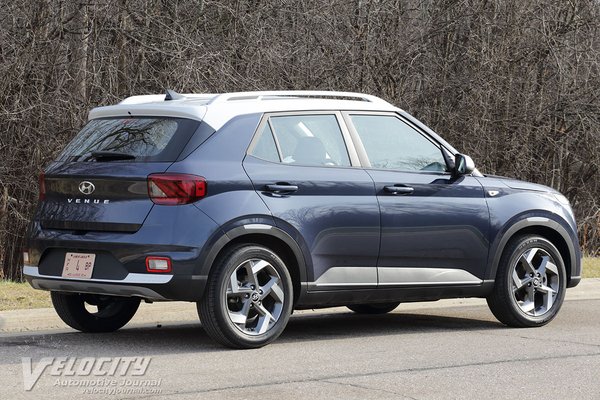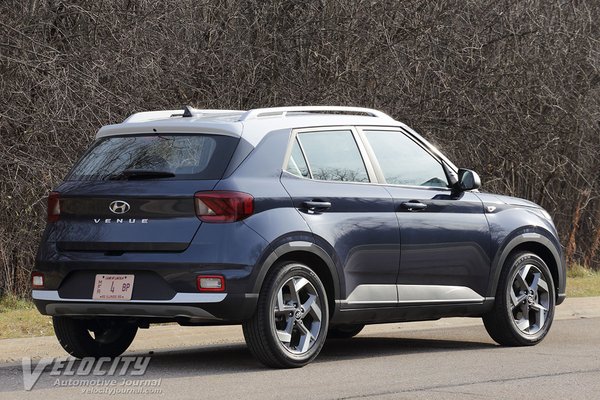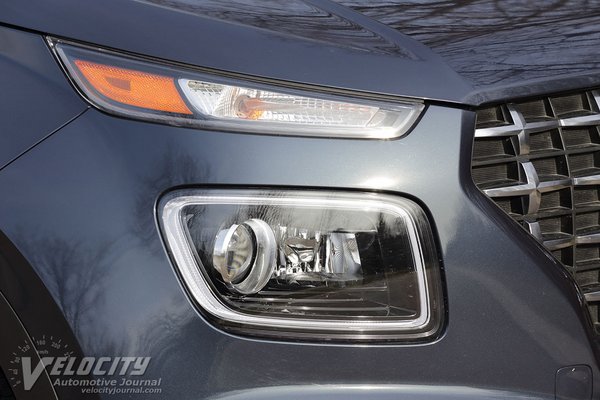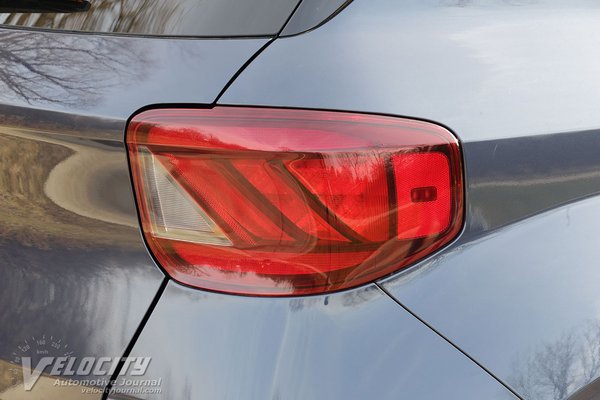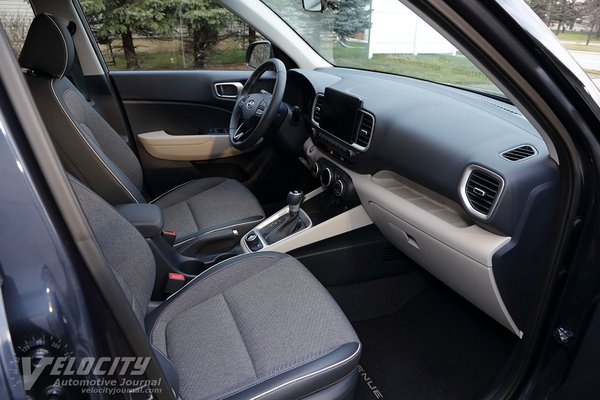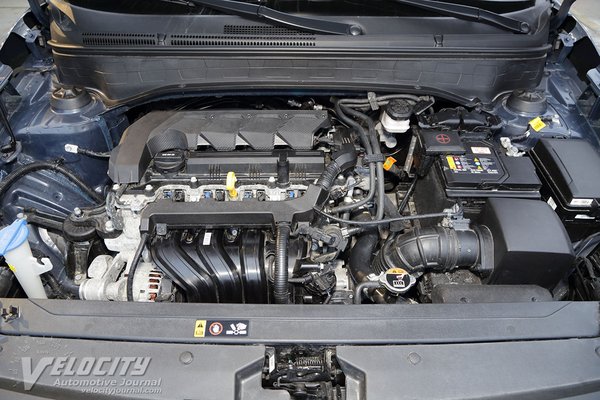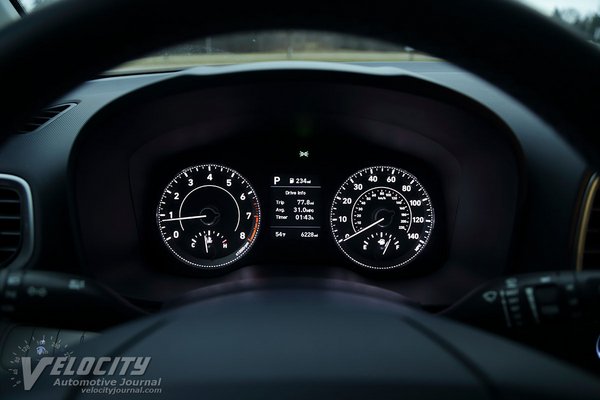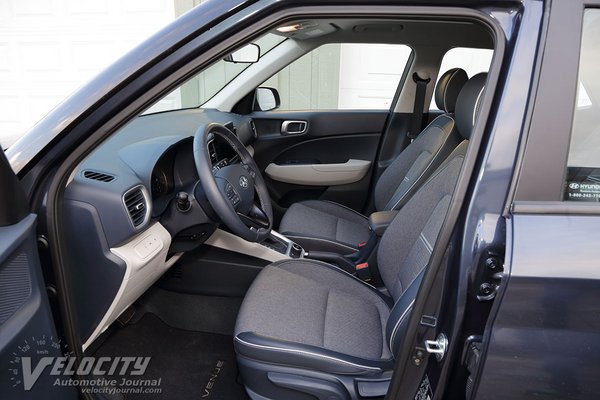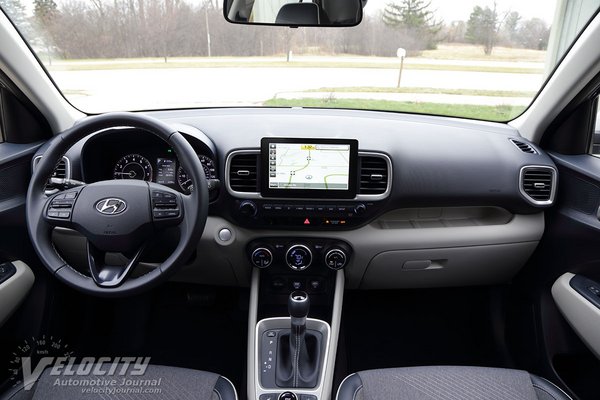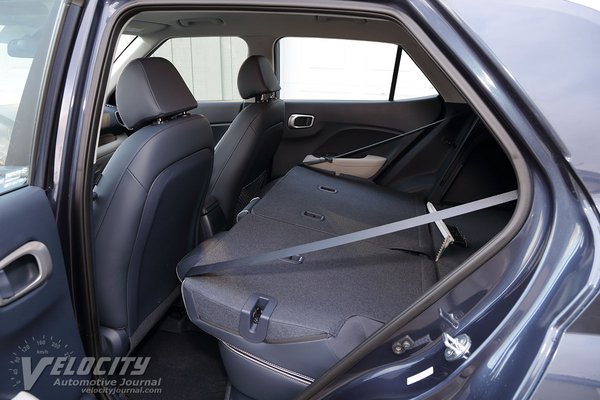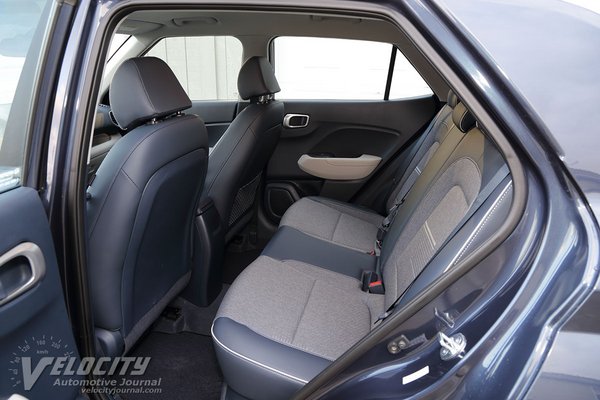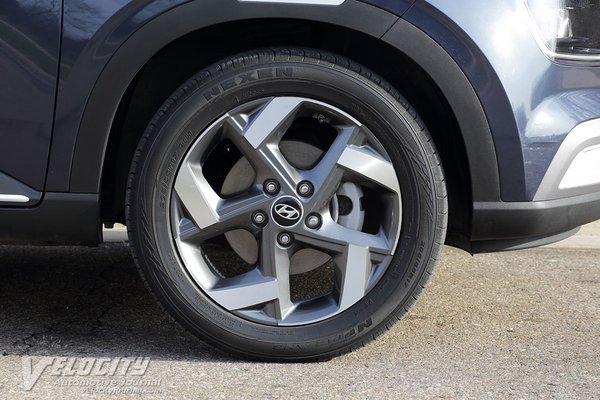2020 Hyundai Venue Denim
01/27/2021
Shahed Hussain
Compact SUVs combine affordable pricing and distinctive styling in a space-efficient package. Some of these small SUVs are actually just tall hatchbacks, lacking an all-wheel drive option. The front-wheel drive Hyundai Venue falls into this category, leaving AWD to its larger sibling, the Kona. Joining other mainstream brands, Hyundai has crammed multiple SUV models into a narrow price range. The base Venue, Kona, and Tucson models are separated by about $5K, so customers have several choices in the Hyundai lineup.
Hyundai sells the 2021 Venue in three variants: SE ($18,750), SEL ($19,800) and the top Denim ($22,050). Note that we tested a 2020 Venue Denim with an identical base price. The sole option was carpeted floor mats ($135). Add the $1,120 freight and handling charge and the total comes to $23,305. The Denim comes with heated front seats, leather-wrapped steering wheel, 8-in. infotainment display, navigation, Android Auto and Apple CarPlay, LED headlights, 17-in. alloy wheels, and a 6-speaker audio system. Safety technologies such as forward collision avoidance, lane keeping assist, blind spot collision warning, and a rearview camera are standard.
All Venues are powered by a 1.6L inline-4 mated to a IVT (Intelligent Variable Transmission) driving the front wheels. The IVT is closely related to a CVT, and is programmed to simulate discrete gearshifts like a stepped-gear automatic. A 6-speed manual gearbox was standard on the Venue SE, but was discontinued for 2021.
The Venue's all-aluminum dual overhead-cam inline-4 has continuous variable valve-timing (CVVT) and port fuel injection. Power output is 121-hp @ 6,300 RPM and torque is 113 lb.-ft. @ 4,500 RPM. The EPA fuel consumption estimates are 30/33 MPG (city/highway). We averaged 31-32 MPG in mixed city and highway driving.
As with other vehicles in its class, the Venue uses a MacPherson strut front suspension design and stabilizer bar. At the rear is a torsion beam axle suspended by coil springs and dampers. Brakes are all-disc: 11.0 in. dia. rotors (front) and 10.3 in. dia. rotors (rear). Steering is a rack-and-pinion setup with motor assist and 2.7 turns lock-to-lock. The SEL and Denim get 17-in. dia. alloy wheels; smaller 15-in. dia. alloy wheels are standard on the base 2021 Denim SE, replacing the steel wheels on the 2020 model. Our tested Denim had 205/55R17 Nexen NPriz AH8 all-season tires. Curb weight ranges from 2,612-2,738 lbs.
Hyundai's designers did a commendable job giving the Venue an attractive interior. Although most interior panels are hard plastic, material and build quality are exemplary. The leather-wrapped steering wheel integrates audio, phone, vehicle status and cruise controls on the spokes. Gauges consist of an analog speedometer, tachometer, and smaller fuel level and coolant temperature indicators; a configurable center display shows vehicle status data. The tablet-style infotainment touchscreen is between the center HVAC vents. An array of pushbuttons below the infotainment screen enables direct access to frequently used functions. The HVAC control knobs are clearly marked and easy to operate. Two USB ports and a 12V power outlet on the center console enable convenient mobile device charging. Behind the shift lever are the front seat heater buttons and the powertrain drive mode knob. Dual cupholders are located on the center console.
Living up to its name, the Venue Denim's seats are covered in blue-gray cloth and blue vinyl. The front seats provide acceptable lateral torso support, but the flat seat cushion padding is too firm to be comfortable on longer trips. Both front seats adjustments are manual: 6-way (driver) and 4-way (passenger). The rear seats are reasonably comfortable for two passengers, but the center position is only tolerable for short trips. Front and rear headroom is adequate for occupants up to 6 ft. tall.
Although 121-hp isn't much power, the Venue's low curb weight enables the 1.6L to deliver decent thrust in urban driving. Above 70 MPH, the high aero drag from the brick-like body ensures tepid acceleration, but the Venue will cruise at 80-85 MPH, accompanied by significant tire, wind, and road noise. On the highway, crosswinds blow the blocky body around, requiring frequent steering corrections to maintain a straight path. At light throttle, the IVT suppresses engine drone to a minimum, assisted by clever shift programming. The drive mode knob has three settings (Normal, Power and Snow) that modify engine throttle response and transmission shift RPM. We used the Normal setting in most driving conditions; the Power mode shifts at higher RPM for faster acceleration. The console shift lever Manual mode simulates an 8-speed automatic, but we rarely used it.
Hyundai doesn't make any claims about the Venue's handling capabilities, knowing that value and utility are higher priorities for customers. The suspension tuning is relatively firm and tightly damped, so the ride gets jittery on patched pavement. As with most beam axle designs, bumpy roads tend to cause the rear end to lose grip, especially on frost heaves on the highway. Around curves, the Venue exhibits mild understeer accompanied by significant body roll, as expected from a tall, boxy vehicle. The responsive steering has moderate power assist and accurately transmits road surface conditions. On both dry and wet roads, the Nexen all-season tires deliver adequate grip. Braking performance was above average; the all-disc brakes clamp down for surprising stopping power, accompanied by decent pedal feel and progressive brake actuation.
As Hyundai's most recent entry into the compact segment, the Venue is a compelling choice as a practical urban commuter. Considering its competitive price point, the Venue packs an impressive list of standard equipment, often extra cost in other vehicles in its class. However, the Venue Denim's pricing pits it against the larger, more powerful Kona SE AWD. In our opinion, the Venue SE and SEL are the best values in the lineup.

